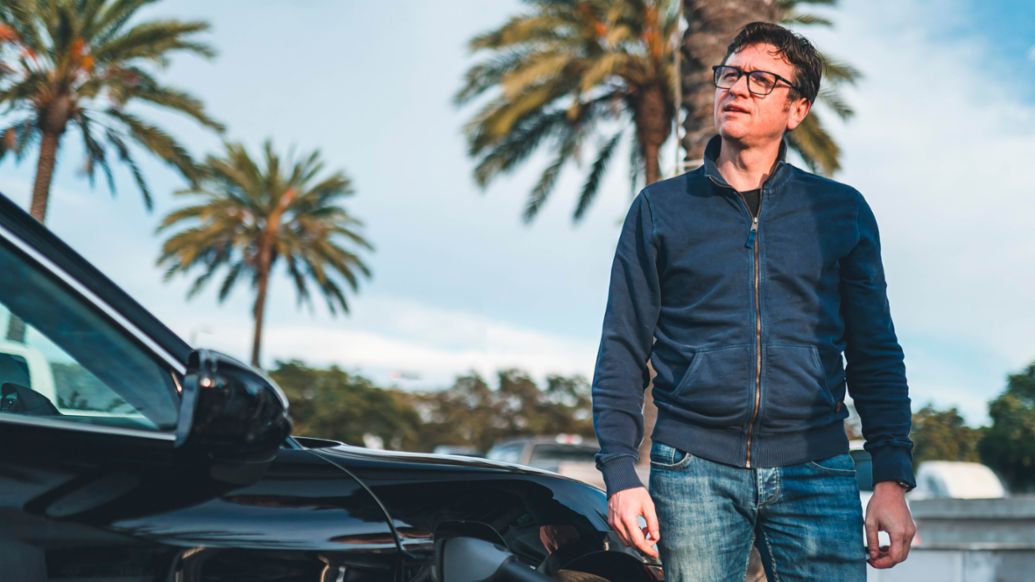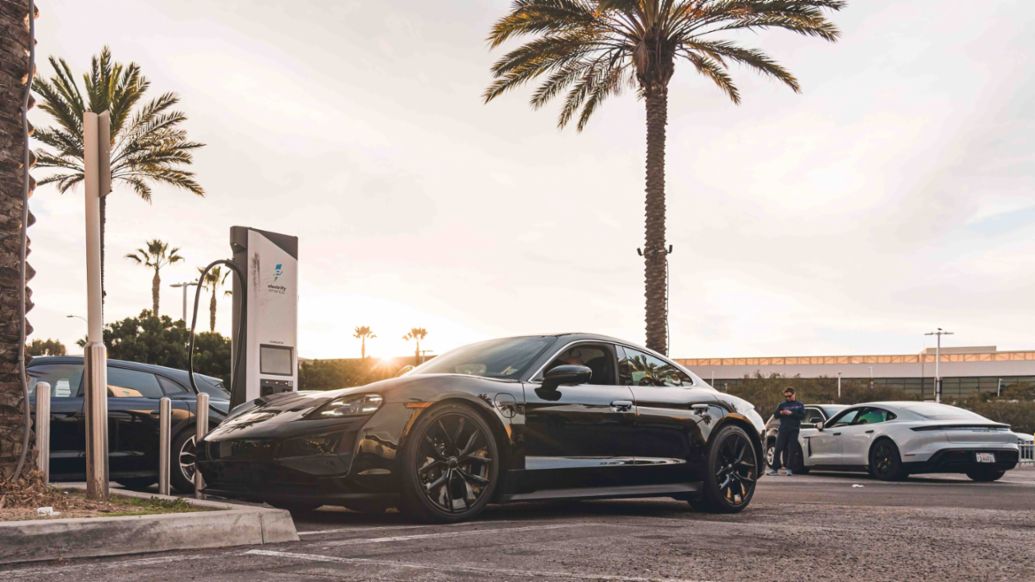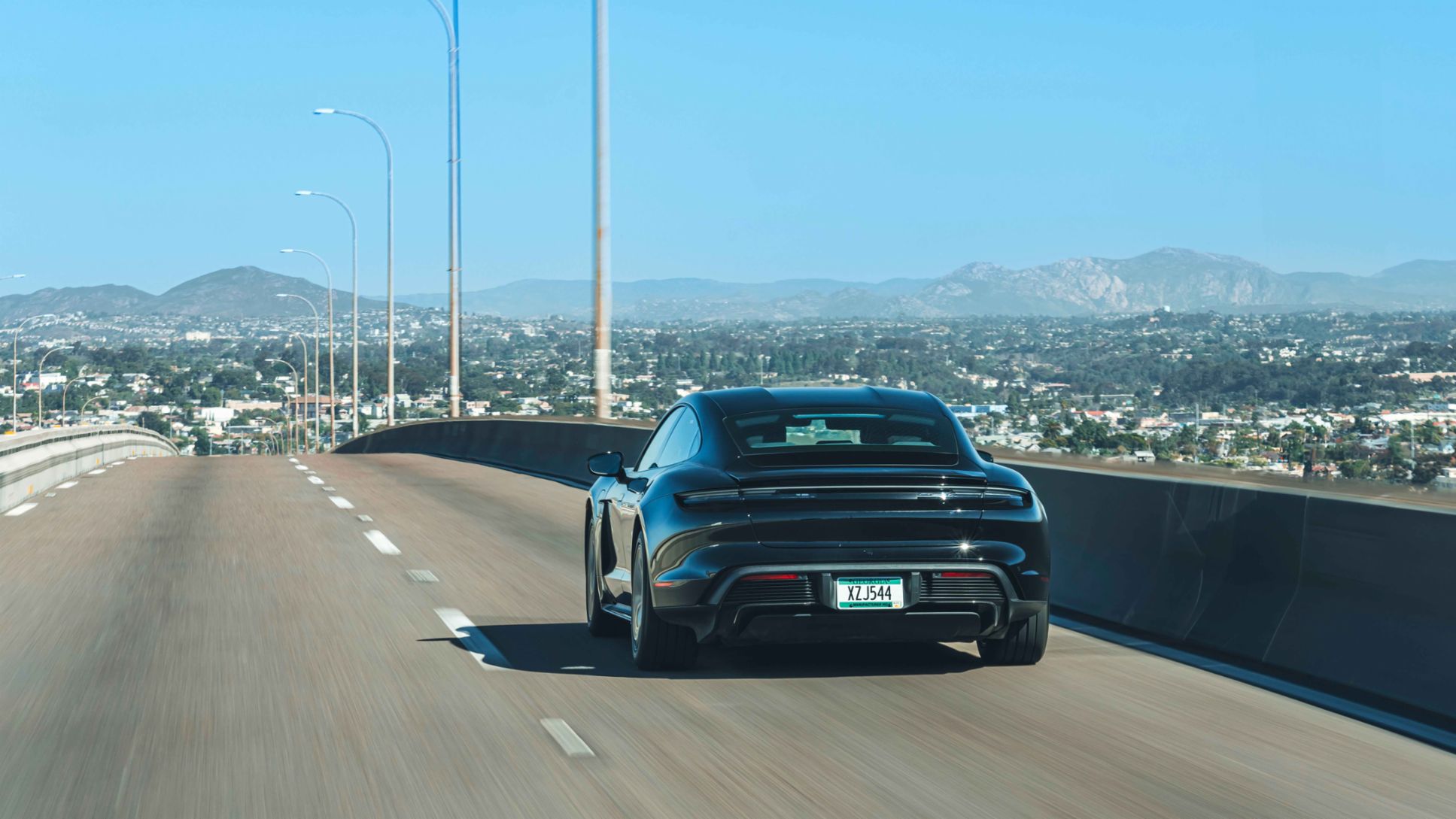Porsche launches the extensively updated Taycan. The new model variants offer more range as well as shorter and more robust charging processes. During an initial range test from Los Angeles to San Diego and back, preseries models demonstrated their further improved efficiency.
'Fast travel' thanks to efficiency
The all-electric sports cars covered up to 587 kilometres on one battery charge on public roads. "For the particularly efficient Taycan sports sedan with the large battery, this practical, final test resulted in a total range of up to 587 kilometres," says the Vice President for the model line Kevin Giek. "A great result. The range test in Southern California impressively demonstrated how efficient the reworked Taycan is. We are continuing to focus on our 'fast travel' strategy for electric mobility: short charging stops paired with high real-world ranges thanks to efficient drives."

This range test was carried out under everyday conditions. Twelve international media representatives drove four vehicles on three days on Interstate Highway 405 and 5 between the Southern Californian metropolises of Los Angeles and San Diego. The teams drove at the maximum speed of 75 mph permitted on interstates. This corresponds to approximately 120 km/h. All four test cars were equipped with the larger Performance Battery Plus.

The cars were charged at the Electrify America Charger in Torrance/Los Angeles. Here, the Taycan demonstrated over 300 kW charging power for many minutes and was able to charge from 10 to 80 per cent state of charge several times in well under 20 minutes**. The charging performance, charging time and the time it takes to start charging were also greatly improved in this test.
Porsche has built almost 150,000 examples of the Taycan since the start of production. The main individual markets for the model are currently the US, the UK, Germany and China. The extensively revised Taycan will be presented in a few days.
Info
* The kilometre (km) range figures were determined by Porsche AG testing. Actual figures will vary as they are dependent on many factors, including without limitation: individual driving style, road and traffic conditions, environmental conditions, fuel quality, a vehicle’s or battery’s condition, load and use. Extra features and accessories (e.g. equipment, wheels or tyres used etc.) can change relevant vehicle parameters such as weight, rolling resistance and aerodynamics and can also affect the range and performance values of a vehicle.
** The specified charging outputs and times (hour/minutes) are dependent on various factors: in general, the charging output and time can vary due to physical and chemical limits, depending on factors such as the available output of the country-specific energy infrastructure, the customer's own domestic installation, the temperature, interior pre-conditioning and charging status, as well as the age of the battery. Charging times may therefore be significantly higher than those specified. To achieve the optimum value of the specified DC charging time (DC = direct current) for a charge status increase from 5 to 80%, a CCS (combined charging system) fast-charging pedestal with > 270kW and > 850V is required, as well as a battery temperature of 30°–35°C. The charging status when commencing charging must not exceed 5%. For physical and chemical reasons, the charging speed decreases as the battery approaches its full capacity. Therefore, it usually makes sense to use fast DC charging to charge the battery up to 80% or up to the required range. The predominant use of CCS fast charging pedestals leads to a long-term increase in charging times. For regular fast DC charging, we recommend a maximum charging output of 50kW. When charging in a domestic environment, AC charging (AC = alternating current) is recommended. Using an (AC) industrial electrical outlet will result in improved efficiency and a much shorter charging time compared to using a household socket.
A lithium-ion battery is subject to physical and chemical ageing, as well as wear and tear. This reduces the battery capacity, depending on the usage pattern and environmental conditions, resulting in a reduction in range and an increase in charging times as the battery ages. Due to the effect of temperature on battery and charging performance, as well as battery life, please consider the following when parking, driving and charging your car:
- If possible, avoid permanent ambient temperatures of over 30°C, such as prolonged parking in direct sunlight. If you cannot avoid ambient temperatures of over 30°C when stationary, connect the vehicle to the mains supply after use and charge the high-voltage battery with AC (alternating current) to a maximum charge status of 85%.
- If the car is left stationary for more than two weeks, the ambient temperature should, if possible, be between 0°C and 20°C and the battery charge status maintained between 20% and 50% during this time.
- For the shortest possible charging time, a battery temperature of approx. 30°C to 35°C is ideal. If charging the car on a daily basis, the maximum charge status of the high-voltage battery should be set to approx. 80%.
Generally, kilometre range and charging times will vary from the published figures in real world Australian driving and charging conditions. Published figures should only be used for the purpose of comparison between vehicles. Information provided and images displayed from our websites or links from our websites may relate to models, performance characteristics, optional extras and features only available in overseas models of the vehicle and must not be relied upon as they may be unavailable in Australia. Please note, product changes may have been made since the production of any content. Please contact an Official Porsche Centre for specific information on current data, vehicles, performance characteristics, optional extras and features available in Australian delivered vehicles.
